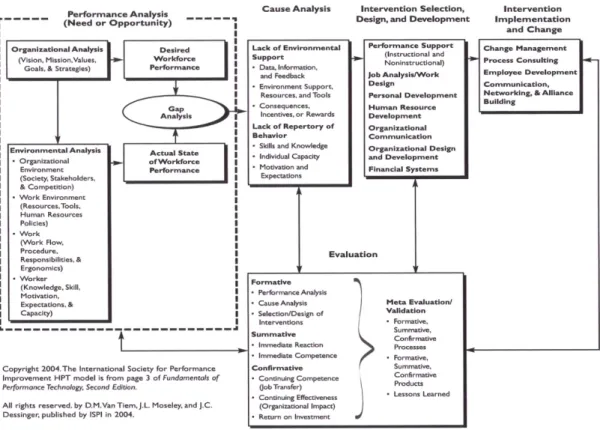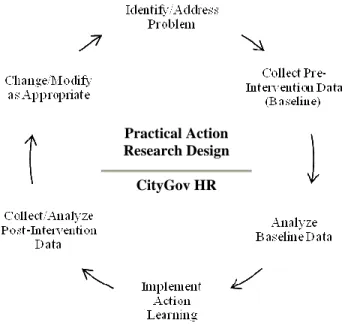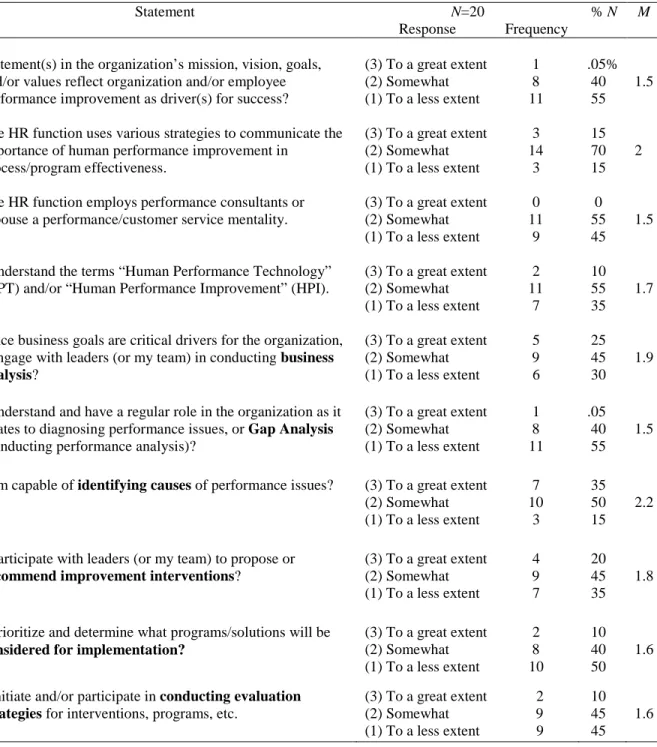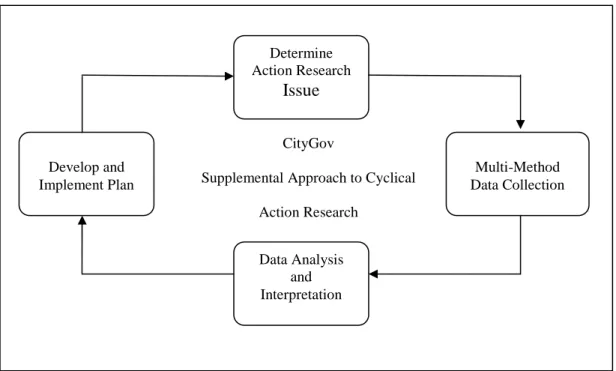It is not known the extent to which local government human resources (HR) professionals are able to systematically address human performance issues. Human performance improvement literature has shown that matching interventions with performance issues can be difficult for teams charged with improving performance. This study investigated the impact that an action learning intervention on human performance technology (HPT) had on HR professionals in a local government organization.
The literature search for this study indicated that HR processes are linked to strategies for improving human performance. Level two post-assessments yielded results in favor of action learning implementation and assessment of self-efficacy. This study is dedicated to the loving memory of my dear grandparents Frank and Lula Carter.
Darlene Van Tiem, an incredible advocate and industry leader when it comes to technology and human performance enhancement, helped create the.
INTRODUCTION Introduction to the Problem
The overarching goal of this study was to advance human performance technology through professional development. The aim of this study was to identify the overall impact that an HPT/HPI knowledge intervention had on the development of HR professionals. How did CityGov's HR professionals respond to teaching new skills for improving human performance through action learning.
The researcher for this study implemented systematic procedures to collect data leading to improvement of human performance in the identified workplace. The social research team for this study consisted of the researcher who implemented the action learning and HR. This study assessed HR professionals' knowledge of human performance technology/improvement concepts and methods.
In this study it was also necessary to emphasize the conceptual framework of HPT/HPI.
LITERATURE REVIEW Introduction
These pioneers not only provided the theory and fundamentals underlying HPT/HPI, but they also helped found the International Society for Performance Improvement (ISPI), the dedicated organization. Boyd (2002) argues that the "performance gap identification and definition is a critical step in helping an organization improve human performance" (p 43). MSN Encarta Premium (2007) defines an intervention as “the act of intervening, in particular entering deliberately into a situation or dispute to influence events or prevent undesirable consequences” (para. 1).
Action learning and action research were the focus of this study as their theoretical constructs were examined to support an applied professional development intervention. Professor Reginald Revans was considered by many to be the father of action learning (Marquardt, 1999; Pedler, 1996; Martinsons, 1998). Zuber-Skerritt is also an Adjunct Professor at Griffith University, Brisbane, Australia, and Professor of Professional and Organizational Development at the UK-based International Management Centers Association [IMCA]” (The Learning Organization, 2002, p. 114).
While action learning is central to this study, it is important to further support the application of the framework by reviewing and discussing the concept of action research. Action research is further explored to gain a greater knowledge base of its theoretical foundations. The personal dimension of action research is aimed at improving the practice of the researcher.
The political dimension of action research is intended to bring about fundamental social change with an emphasis on social justice (Ziechner & Noffke, 2001; Gall, Gall & Borg, 2003). This thought by Creswell is supported by Mills' (2000) identification of principles related to assumptions about roles of action research participants. One of the principles identified is noteworthy in making a connection of action research with a non-educational setting.
Susman (1983) provides a five-stage cyclical process for action research that emphasizes continuing the entire process until the identified issues are resolved. While adults respond to some extrinsic motivators, the most powerful motivators are intrinsic motivators. Programmed knowledge and detailed questions from action learning can facilitate the connection of three key elements related to action research: inquiry, action and.
As such, both action learning and action research can be tools through which researchers and facilitators introduce adult learning principles.

METHODOLOGY Introduction
The practical application of action research was examined in this study to support its usefulness in guiding action learning as a value-added professional development intervention. To more meaningfully address the capacity for change, the action research design for this study was supplemented with mixed-methods data collection and analysis. The cyclical process used in this study identified pre- and post-data collection and analysis (steps 2, 3 and 5).
According to the Capella University IRB Handbook (2006), "The purpose of the IRB review and approval process is to ensure the ethical treatment and protection of human research participants and their records" (p. 6). It should be noted that the researcher of this study is directly responsible to the HRC and was also the main facilitator for the action learning intervention. Due to the importance of answering the research questions of this study, a data collection strategy was designed and implemented.
The six steps of study design previously identified in Figure 2 represent the cyclical action research approach that was used for this study. This study used a mixed-methods data collection and analysis design guided by practical action research. This study will use qualitative and quantitative data collection and analysis and requires additional justification for their use.
Data analysis for this study was based on the collection of numerical and textual data derived from a mixed data collection approach. An example of the applicability of inductive analysis as it relates to the action learning intervention of this study is given. The actual MIA that will be used in this study will allow the researcher to capture both quantitative and qualitative data.
The overall goal of this study's methodology was to establish an effective design plan to facilitate and improve action research. Use of mixed methods research was also complementary to the action research initiative used in this study.

DATA COLLECTION AND ANALYSIS Introduction
This helped guide the decision of the researcher to implement an action learning intervention to increase human performance technology (HPT) knowledge and. The determination was made to implement the action learning intervention as a result of the average scores reflected in the BKAT. In this regard, action learning was feasible because HR staff at CityGov required a behavioral change based on the results of the BKAT administered earlier in the study.
Action learning was implemented to address what was considered a real-world issue for the organization. The action learning intervention was guided by six components of action as expressed by the World Institute for Action Learning (2008). Adapted from "Components of Action" from the World Institute of Action Learning (2008) Action Learning Overview (section 2, paragraph 2).
Bens (2000, p. 70) states “we need to ensure that people take an active part in the facilitated sessions and avoid allowing people to dominate or withdraw from the learning”. The context which underlies the theories presented by Dierk and Saslow (2007) and Bens (2000) can be seen as constructs that support the rationale and success of the action learning intervention. The researcher as facilitator empowered students to be responsible participants within the action learning environment. The actual action learning intervention time was 7.5 hours in which 20% was facilitator-directed and 80% learner-directed.
The MIA was used to collect participant data regarding their immediate reaction to the overall action learning process. The VSM was used to collect participants' data on their level of confidence to apply the knowledge gained from the action learning intervention. The purpose of the analysis was to determine the response of the participants to the action learning intervention.
In terms of actual perceived value in relation to time, approximately 80% of participants felt that the value was equal to or greater than the time spent on the action learning intervention. Study participants were also asked to rate the action learning method of professional development through qualitative feedback. Participants were asked to indicate their level of confidence in using the topics discussed and implemented in the action learning intervention.
Nevertheless, the feedback seems to indicate that participants responded well to both the action learning intervention and the HPT knowledge acquisition.

RESULTS, CONCLUSIONS, AND RECOMMENDATIONS Introduction
The action learning component of the cyclical process served as the most critical approach to the study and therefore warrants further discussion. As such, action learning to address the knowledge deficit focuses on advancing the technology of human performance. As revealed in Chapter 4 of this study, participants were asked to rate the overall effectiveness of action learning.
Participant responses helped answer this study's third research question; what was the reaction of CityGov's HR professionals to learning new human performance improvement skills through action learning. Their exposure to HPT and the concepts of action research and action learning can have a lasting effect in terms of transferability and sustainability. Action learning for the HR students who participated in this study proved to be a beneficial learning experience.
Action research and action learning for HR professionals as well as other managers should be seriously considered in local authority organisations. The benefits of action research and action learning can prove to be significant as methods for education and development. A final implication for research and practice can be action research and/or action learning's theoretical constructions, which are expectations for development in organizations.
Senior management teams in various organizations can use action research and action learning to engage teams and groups in performance improvement activities. The insights into action research and action learning provided in this study can assist in the development of HR professionals. Future researchers can conduct studies that emphasize the use of the cyclical model of action research (Glanz, 1998) without the need to implement action learning as a solution to an identified problem.
This study examined the action research process and outcomes of an action learning intervention program for human resource (HR) professionals in a local government organization. As part of a general action research approach to this study, data were collected and analyzed before and after the action learning intervention. This self-assessment should be done after the action learning intervention on the HPT/HPI.
Instructions: This self-assessment must be completed after the Action Learning Intervention on HPT/HPI.
